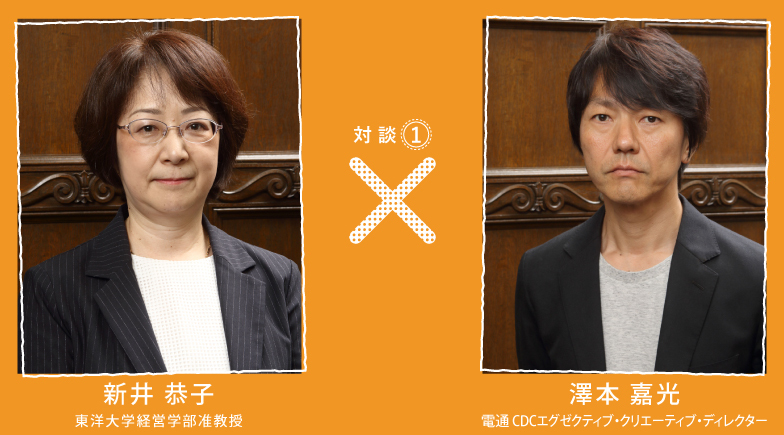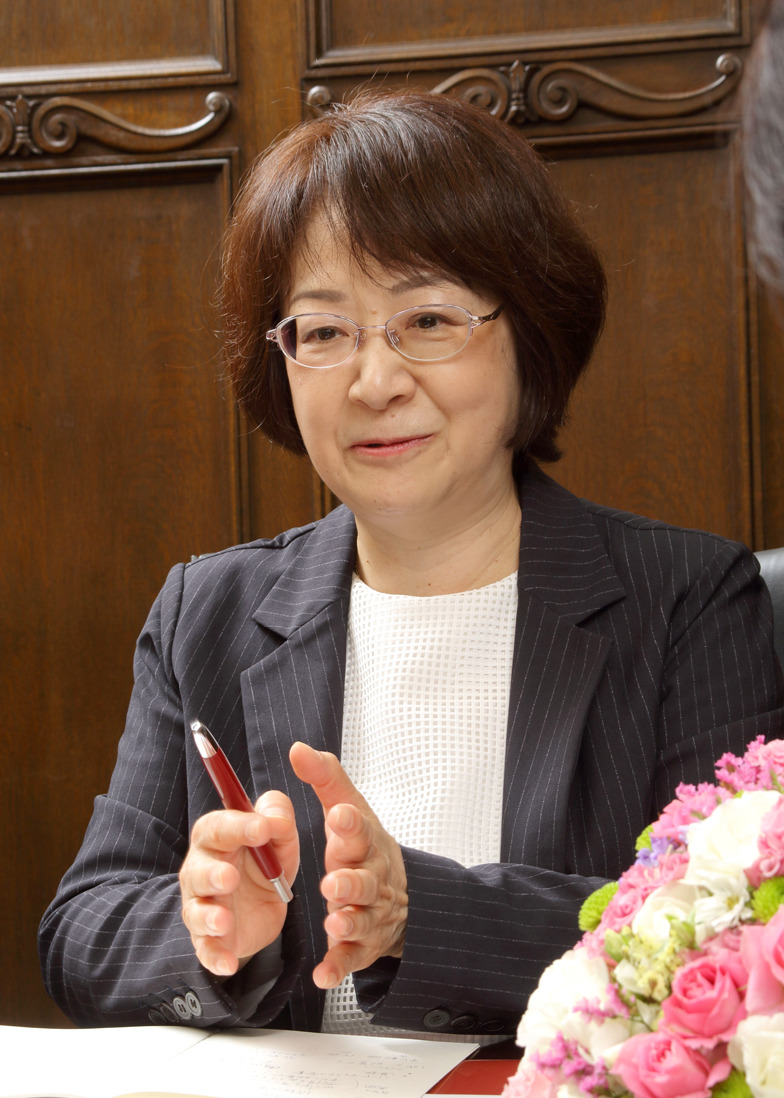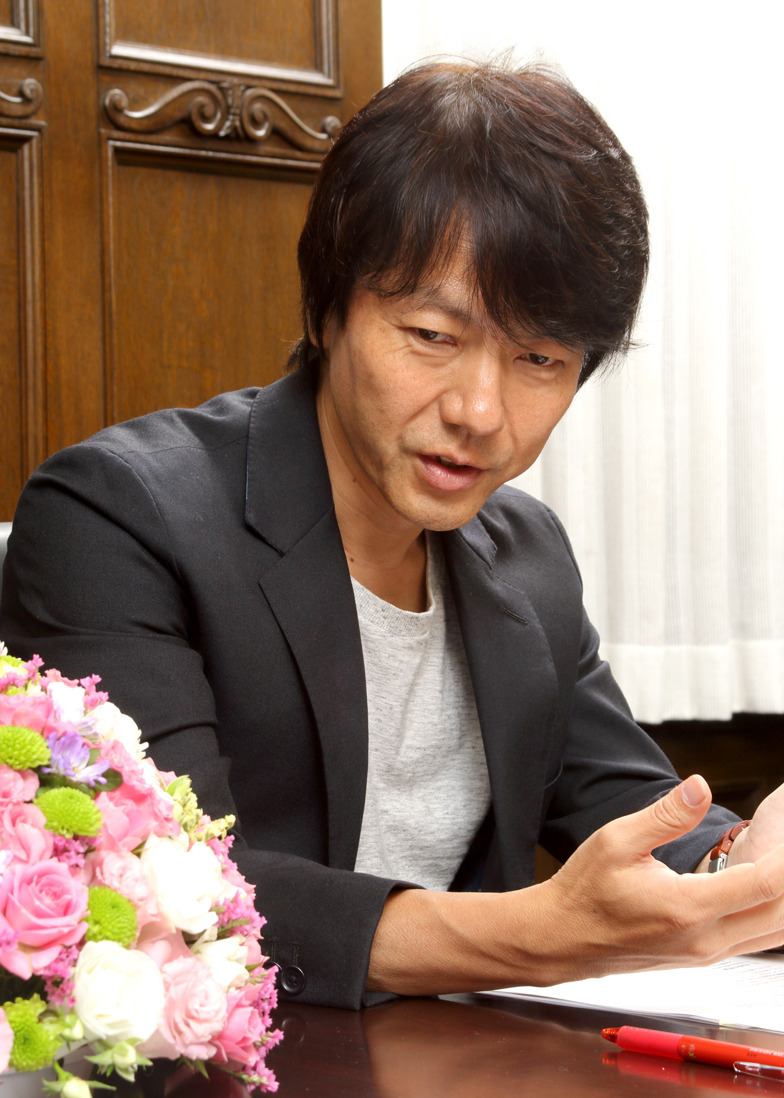Sawamoto: Fundamentally, clients commission work to sell their products. So, it's possible to create a commercial that simply lists product information within 15 or 30 seconds. However, if a commercial that merely conveys information and one that adds entertainment have the same effect, I believe we should choose the latter.
The reason is this: by adding some kind of emotion, we might just make the world a little happier. Suppose watching that commercial once a day increases the total amount of joy and happiness in the world by 1%. If 100 million Japanese people see it, that's a significant amount for Japan as a whole. It's rare to have work that can do something like that, and that's my intention, or rather, my ambition. It's difficult to achieve that with something that just conveys information.
There's a theory that the amount of information humans encounter daily grew exponentially from the 1990s to the 2000s. It's a hypothesis, but if we think of the brain as a hard drive, its capacity is fixed. Back then, it was pretty empty. Now, however, there's so much information that it's constantly full. Consequently, we instantly judge what information interests us and what doesn't, selecting and discarding accordingly. We're indifferent to things we're not interested in, and for things that interest us, we actively seek them out. In this increasingly polarized reality, I believe that if the information presented in a commercial isn't organized to align with the viewer's interests or concerns, it simply won't function as advertising at all.
Arai: With information being so overwhelmingly excessive, it can be quite difficult to get the intended message across.
Sawamoto: One successful method to spark interest or curiosity, as seen with the "Shirotokke" series, is incorporating subtle humor or emotional elements. The level of competition in this area seems fiercer than in the past. Old commercials, even if dull, relied on frequency (how often the ad reached viewers). If you repeat the same commercial from morning to night, people will inevitably remember it. But now, if the commercial itself is boring, people skip it, so frequency doesn't matter much anymore. For example, if you have a frequency of 100 but the desire to remember is zero, that's 100 x 0 = 0. But if you only see it once and have a desire to remember it that's a 2, then 1 × 2 equals 2. So rather than frequency, we have no choice but to focus on increasing impact or creating memorable points. Taking that argument to its logical conclusion means the method of buying massive amounts of spots becomes unsustainable (laughs).
If frequency holds little meaning, it raises the question: is it best to allocate all commercials to 15-second spots? This is because the intended message of a commercial suits certain durations better than others. You absolutely cannot make someone cry in 15 seconds. Even 30 seconds isn't enough. To move people emotionally to tears, you need 60 seconds. And nowadays, I believe commercials with a narrative tend to spread more widely among people.
Behind the Scenes of the Shiroto Family "Father = Dog"
Arai: So, to create a commercial with a story, you need a certain amount of time, right?
Sawamoto: Exactly. To create something with narrative depth, you inevitably need the seconds. If the goal is just to get people to remember a name, four 15-second commercials might work. But if you want to convey corporate image and emotion alongside that, one 60-second spot is probably more suitable.
I run Tokyo Gas's 90-second commercial just once a week, and surprisingly, a lot of people see it. But they're not watching it live during the broadcast. People who see it on social networks like Twitter might later watch the program they saw it in, or go to Tokyo Gas's website and watch it on their smartphone. The timing and device used to watch it vary. Overall, it shows that different durations suit different purposes. Of course, I'm not dismissing 15-second ads; I think it's important to recognize their role and create ads accordingly.
Arai: I'm researching whether continuously providing the same information is effective. From the perspective of cognitive effects, I believe we can apply the theory of relevance.
Relevance theory is built on the fundamental premise that people won't seek information unless they have an interest in the subject. Unless it offers a shift in their existing context, they might pay attention momentarily but won't attempt to interpret it. Even if they do interpret it, they'll quickly forget and it won't stick in their memory. In that sense, it might align with what Mr. Sawamoto mentioned. You could call it art that transcends commercials solely aimed at selling products.
Now, regarding the currently very popular "Shirotokke" commercials, some young people seem to say, "That dog represents the modern father, a figure that feels out of place in the family." What was the actual concept behind creating that commercial?
Sawamoto: I think what you just mentioned hits the mark in a way. When we thought of making one family member a dog, the modern father figure seems dignified but is actually incredibly cute. There's a common perception that despite all the barking, he's cute and therefore cherished, right? Conversely, if we made the mother the dog, it would become a pretty harsh household with constant yapping.
Arai: She looks like she might bite (laughs).
Sawamoto: That's why we chose the father. But actually, there was a long-standing setup leading to this. Before this commercial aired, SoftBank had been running commercials for a while where only dogs conversed. We created voiceovers for footage of dogs—two or four dogs—discussing the product. So, why did it become a dog commercial? It was a deadline issue.
Normally, even if you work really hard, it takes about a month from receiving the request, presenting the concept, preparing for and shooting the commercial, to editing and finishing it. But we got a request to speed up that deadline.
Arai: Even a month feels fast, though (laughs).
Sawamoto: At first, we just tried to push through with sheer effort, but we realized there were limits. So we thought about how to do it fastest, and the answer was: don't shoot. Not shooting meant using existing footage. But using humans as footage is basically impossible. Lip-sync doesn't match, so even if you dub voices over human mouths later, the movement of the speaking mouth and the actual audio are out of sync, which looks weird.
That left animals as our only option. We gathered about 100 dogs in a park in Ibaraki, continuously filming them to build an archive. We then pulled footage from that archive, paired it with dialogue, and presented it. So actually, dogs talking was the original concept. While working on that, we also received the brief "24-hour free family calls." We did cast humans, of course, but SoftBank approached us asking if we could incorporate dogs somewhere.
Arai: I see. It really shows how constraints can spark creativity—that's a fascinating story (laughs).
Sawamoto: I think if there hadn't been a commercial with a talking dog beforehand, the father character probably wouldn't exist.
The Importance of Context
Arai: What specific effects did this commercial have? Sales and awareness must have skyrocketed, and it became a social phenomenon... As viewers, we'd think, "I should go to the bathroom during the commercial break," but when that commercial started, we'd think, "I'll wait until this ends and see how the next part of the story unfolds." I think that connects back to the intention we discussed earlier. Regarding the effects of making people happy or unexpectedly moved to tears, do you have any tangible feedback or concrete numbers?
Sawamoto: Clients have praised it, but I haven't been given detailed figures. However, I believe the biggest achievement is probably that SoftBank started branding itself through dogs. Actually, the narration in the commercials doesn't say "SoftBank" anymore. People recognize it as a SoftBank commercial just by seeing a family with a talking dog. This is hugely significant. If you spend one second saying "SoftBank" in narration during a 15-second spot, you only have 14 seconds left to work with. That makes a huge difference.








